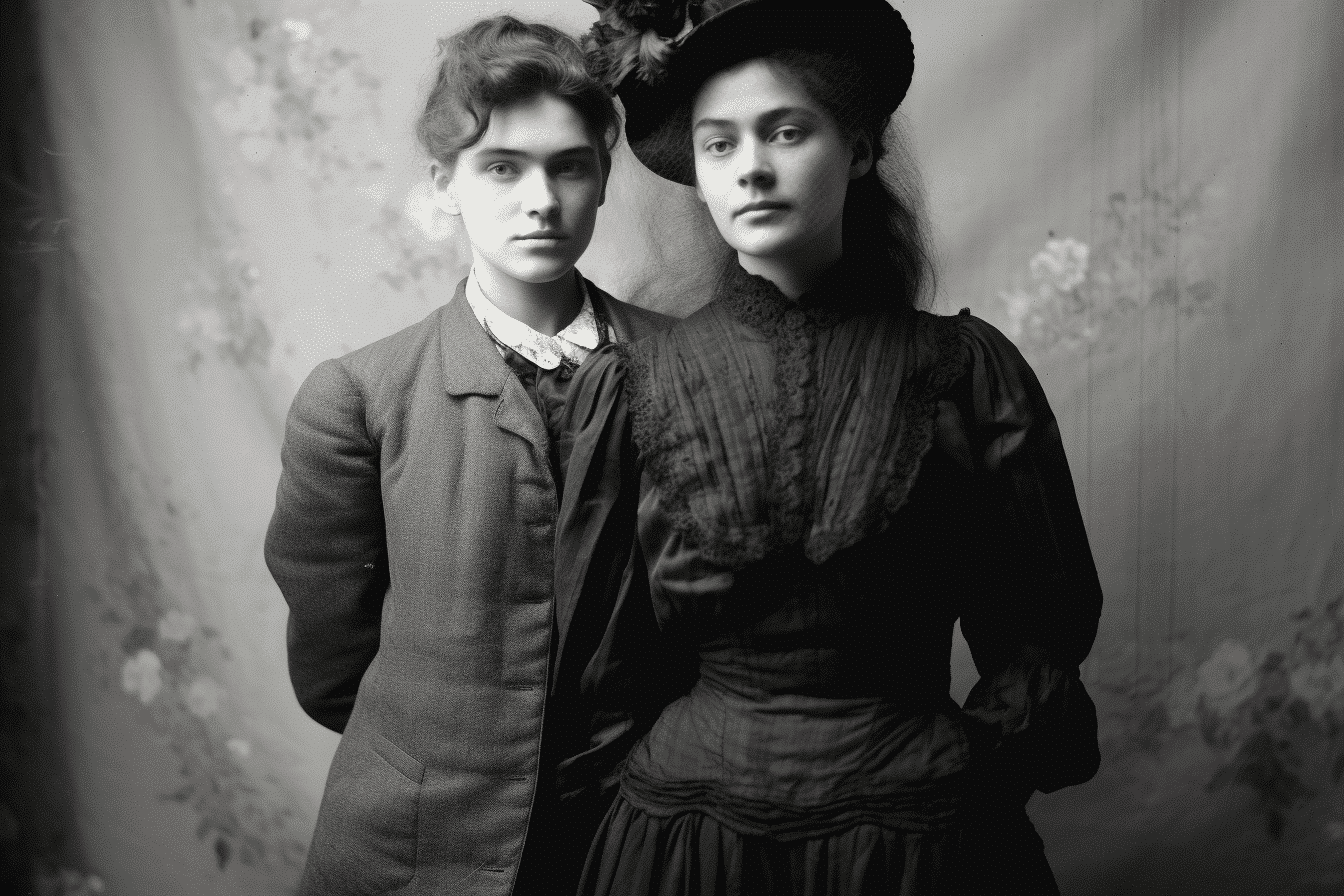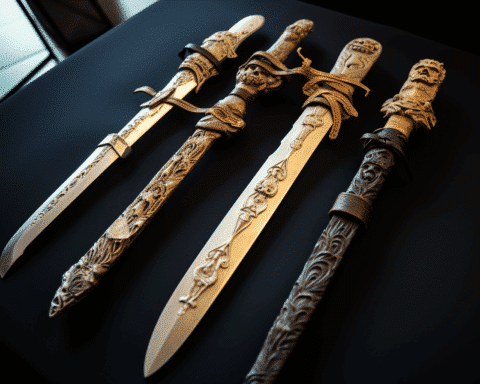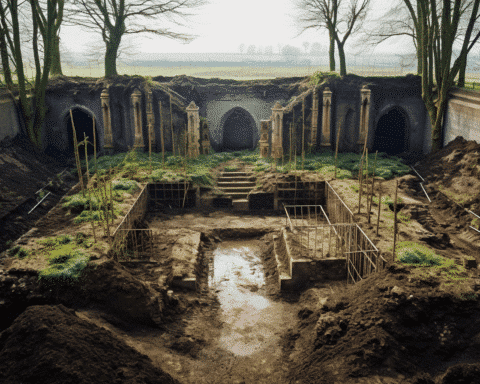In the early 1900s, the photography studio managed by Norwegians Bolette Berg and Marie Høeg doubled as a secret meeting place. During business hours, it functioned as a typical studio in Horten, Norway, where locals could get their portrait images for cartes de visite, a popular photo trading card of that era. After sunset, however, the studio became a hub for politically active women amidst the nationwide vibrant equality movements.
Living life unapologetically on their terms, Berg and Høeg existed as a couple when LGBTQ visibility was virtually non-existent. They jointly ran a studio and publishing business when women’s professional and personal lives were heavily regulated. Decades after their demise in the 1940s, an overlooked facet of their lives surfaced from boxes of glass negatives labelled “private.” These contained images of the pair amusingly disregarding conventional gender roles in their portraits of themselves and those close to them.
The pictures show Berg and Høeg alternating between female and male attire, using props and painted scenery to create unconventional compositions. In one photo, Berg wears an oversized fur-lined woollen coat, a moustache and glasses, her eyes twinkling with playful intent. In another, Høeg and one of Berg’s sisters smoke cigarettes while seated in a rowboat, a small dog curiously looking over the side.
Photographer Leif Preus bought these personal negatives at an auction in the 1970s, where they went unnoticed within his more significant collection for some time. However, since the first display of Berg and Høeg’s work in the mid-1990s, these women have become beloved figures in queer art history and continue to garner increased international attention, notably through the “Like a Whirlwind” exhibition at the major international festival PhotoESPAÑA, displayed in Madrid until August 24.
The couple’s self-portraits are captivating due to their seeming modernity, according to Kristin Aasbo, a curator at the Preus Museum in Horten, who has led research and exhibitions about the couple. (The museum, established from Preus’ collection in 1976, was later purchased by the Norwegian government and is now the nation’s national photography museum.) Aasbo adores their dynamism, evident even when alone in their portraits, seemingly entertaining the person behind the camera.
In one of Aasbo’s favourite images, the couple is pictured in their makeshift boat, with Høeg ‘rowing.’ This photo is one of the rare instances where the couple is seen posing together.
“Both of them have their hands visible, and there’s a ring on each finger,” Aasbo pointed out. “It gives off a vibe of a wedding photograph, which is why it holds a special place in my heart.”
While much of Berg and Høeg’s life story remains shrouded in mystery, a group of researchers and curators have managed to slowly stitch together some details from old newspaper articles and other era-related documents.
Høeg, a fisherman’s daughter from the small town of Langesund, started taking photographs after a trip to Finland with her brother. She is thought to have met Berg, who was learning photography then, in Finland. They moved to Horten in 1894 to set up their studio. Berg, a village priest’s daughter from Nannestad, was one of six sisters, only one of whom ever got married.
Høeg was known for her unconventional style and magnetic personality, according to Aasbo. “Marie brought a new energy to Horten, a formerly quiet town, and started shaking things up,” Aasbo said. “She smoked, wore trousers, was extroverted and opinionated.”
Their studio, Berg & Høeg Fotoatelier, was the venue for the cryptically-named “Discussion Club,” where local women learned about political discourse during the suffrage movement. They also hosted meetings for a group called “the Sanitary Ladies” that focused on environmental concerns.
While operating their studio, Berg and Høeg primarily created the smaller cartes de visite and larger cabinet cards that were trendy then. However, they closed the business and moved to Oslo in 1903, shifting their focus to printing postcards featuring landscapes and Norwegian art during the postcard boom. They also started publishing books on art and society, including career guides for women.
Aasbo hopes to solve how the photographers’ negatives were acquired. Their whereabouts during the 30 years between their deaths and the auction where Preus bought them are unknown. They are believed to have left the boxes at their holiday farmhouse in Lunner, which was discovered only after the house was sold, Aasbo explained.
Unexpectedly, the museum gained hundreds more of their negatives last year, found within a collection of work by the Norwegian photographers Thorvald and August Brunskow. Like the ones Preus purchased, this batch also contained a small “private” box filled with more intimate self-portraits. Around 700 known negatives of Berg & Høeg’s work are available, including about 80 that depict their “private” lives.
Aasbo believes the images, likely controversial during Berg and Høeg’s lifetimes, should be exhibited with their historical context in mind today. Despite online debate about whether the “private” label meant the photos should have remained hidden, Aasbo interprets it differently.
Aasbo remains hopeful about unearthing more about their lives as their fame increases. Thus far, their photographs have only been shown in Europe but will debut in the US at the Wrightwood 569 Gallery in Chicago next year.
“It would have been wonderful to discover a diary, but I don’t think we’ll find that,” she said. “But we have grown so attached to these ladies… They find a way into your heart.”
As the legacy of Berg and Høeg continues to unfold, their fearless defiance of societal norms, unapologetic love, and unique perspective on gender serves as a beacon for the modern LGBTQ+ community and beyond. The intriguing story of their lives, trailblazing contributions to photography, and audacious self-expression challenge our understanding of history and inspire future generations to live authentically. While their lives remain partly shrouded in mystery, the discovery of their playful, gender-defying portraits decades later only adds to their enduring charm, revealing a captivating tale of love, resilience, and the courage to be oneself in a time of constraints.




